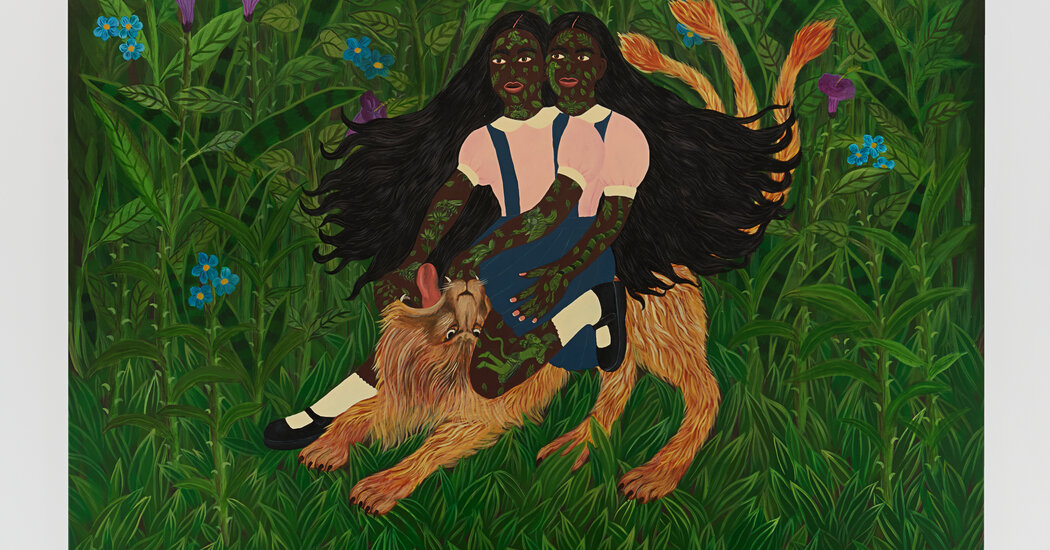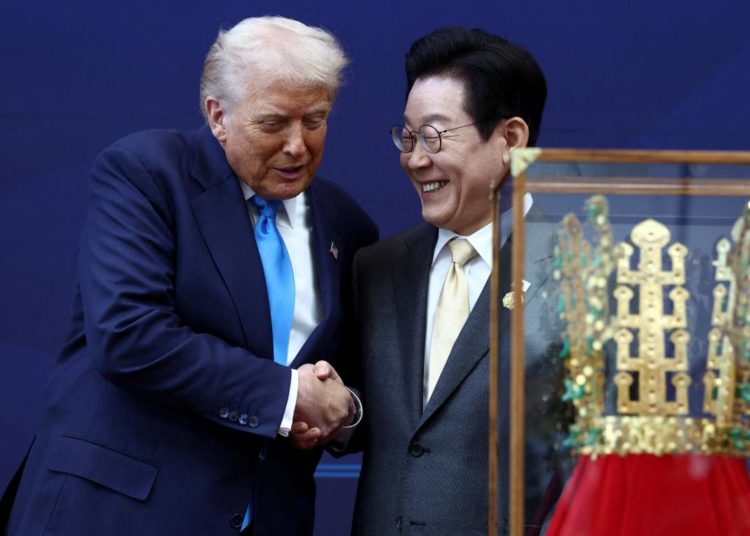Ask the Guadeloupean artist Kelly Sinnapah Mary about her origins and the answer is, to say the least, complicated. As a child, she thought that she was of African descent, like many of the people around her. It was only later that she realized that her ancestors — like millions of others around the globe in the 19th and early 20th centuries — had actually come to the Caribbean island of Guadeloupe generations earlier as indentured workers from South Asia.
Her paintings, sculptures and ceramics, which layer Caribbean, South Asian and African cultural references, are a record of her search to learn how she and her family ended up so far from their original home, and understand the cultural melting pot they experienced in their new one. Schoolgirls ride a lion in one of her paintings, hair fanning out in an unmistakable reference to the Hindu goddess Durga. The landscape they’re in is Caribbean. Sinnapah Mary’s name for them is Sanbras — her play on Sambo, from the children’s book character Little Black Sambo — whose name has come to represent the worst kind of anti-Black stereotype, but who, in the original telling, was Tamil, like the artist.
Tracing a single origin of her imagery would be impossible, which is exactly the point.
She’s part of a wave of South Asian diasporic artists, writers and filmmakers who have taken up stories of how and why their ancestors ended up in unexpected places around the world, and the cultures they experienced and created there. That includes the film director Mira Nair — mother of the New York City mayoral candidate Zohran Mamdani — whose breakout 1991 movie “Mississippi Masala,” starring Denzel Washington and Sarita Choudhury, focused on a Ugandan family of South Asian origin who moves to the United States.
Works like Sinnapah Mary’s may also shed light on Mamdani’s response to why he checked both the “Asian” and “Black or African American” boxes on a college application: “I checked multiple boxes trying to capture the fullness of my background,” he said.
I spoke to four artists about how they weave their own sense of place and belonging into their work.
‘All Those Things Have Evaporated’
The post For South Asian Artists, Identity Doesn’t Fit in a Box appeared first on New York Times.




